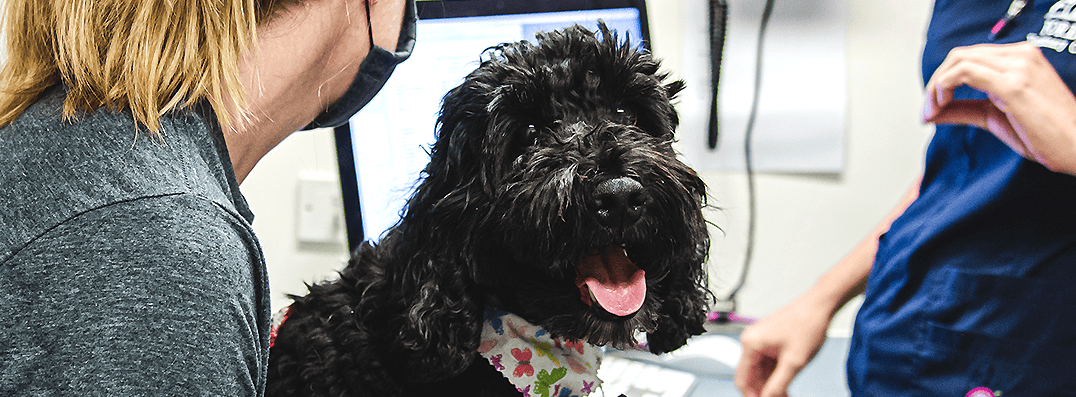Keeping your pet's claws trimmed is an essential part of their overall health and wellbeing. Long nails can cause discomfort, make walking difficult and even lead to accidental injuries to both you and your pet.
While clipping your pet's claws might seem daunting at first, with a little practice and the right approach, it can become a quick and stress-free experience for both of you. Here at Forest Vets, we're dedicated to helping you provide the best care for your pet, therefore, this guide offers some helpful tips and tricks for clipping your pet's claws safely and effectively.
Forest Vet’s stress-free tips for clipping your pet's claws
Before diving into the clipping process, here are some key strategies to create a positive and stress-free environment for your pet:
- Preparation is key: Gather all your supplies before clipping your pet’s claws. You'll need the right clippers (more on that later), styptic powder (in case of accidental nicks), treats for positive reinforcement and a comfortable location with good lighting.
- Acclimatise your pet: Introduce your pet to the clippers gradually. Let them sniff and investigate the clippers without clipping their nails at first. Reward them with treats to create a positive association.
- Find a comfortable position: Secure your pet in a comfortable position where you can safely handle their paws. Enlist a helper to hold your pet if necessary, especially for larger or more anxious pets.
Sharpen your skills: Top tips for safe and effective pet claw clipping
The type of clippers you choose will depend on your pet's size and nail thickness. Here's a quick rundown of popular options:
Guillotine clippers: These are the most common type and work well for most dogs and cats with medium-sized nails.

Nail grinders: Electric nail grinders are a good option for pets who are very sensitive to clippers or have very dark nails where the quick is difficult to see.

Familiarising Your Pet with the Process:


- Identify the quick: The quick is the live blood vessel and nerve within the nail. It's essential to avoid clipping the quick, as it can cause pain and bleeding. The quick appears as a pink or red core within the lighter-coloured nail.
- Start slow: Clip only a small amount of the nail tip at a time, especially for first timers. You can always clip more later if needed.
- Angle the clippers properly: Hold the clippers perpendicular to the nail and clip straight across the tip. Avoid angling the clippers inwards towards the paw pad, as this increases the risk of clipping the quick.
Step-by-step clipping your pet’s claws guide:
- Prepare your workspace and gather your supplies
- Have your pet sit or stand comfortably and securely
- Gently hold one paw and extend a claw
- Locate the quick and identify the area you can safely clip
- Position the clippers perpendicular to the nail and clip a small amount off the tip
- Repeat the process for each nail, taking breaks and offering praise and treats as needed
- In case of accidental bleeding when clipping your pet’s claws, apply a small amount of styptic powder to the tip of the nail to stop the
Top tip: if your pet bleeds, hold the compress, rather than rubbing the bleeding, as rubbing may cause clotting to form.
Additional tips and tricks:
- Clip after a bath: When your pet's nails are softened after a bath, they can be easier to clip and less prone to splitting.
- Make it a positive experience: Offer plenty of praise, treats, and petting throughout the process to keep your pet calm and cooperative.
- Take breaks if needed: If your pet becomes stressed or anxious, take a break and come back to it later.
- Start young: The younger you start clipping your pet's claws, the more used to clipping their nails they will become.
Consult a vet if you are concerned about your pet's claws
If you're unsure about clipping your pet's claws yourself, especially if they have very dark nails or any underlying health conditions, don't hesitate to contact us. We can demonstrate proper clipping techniques and provide guidance specific to your pet's needs.

